A heart rate monitor is a useful device for collecting real-time data about your heart activity. It helps you achieve your fitness goals or track your performance during your physical activities. To better choose the right model for your needs, browse this buying guide and comparison of the best heart rate monitors in 2020.
Here is our commitment, to make sure that we provide the best user experience and content quality:
You can support us by using our links to make your purchases (at no extra cost to you)! This sometimes earns us a commission which allows us to remain independent. More about us
Our selection
"This heart rate monitor transmits heart data instantly. It uses Bluetooth 5.0 or ANT + technology for transmission to compatible devices. Its price remains affordable…"
"Using this heart rate monitor, you can easily track your heart rate in real time via your bike computer and GPS watches via ANT+, smartphone…"
"The Polar H10 provides greater measurement accuracy than the Garmin HRM Cardio-Dual thanks to its exceptional heart rate sensor. This waterproof model can be used…"
"The CooSpo 706 uses an optical sensor that measures heart rate at the wrist. Unlike the 3 models previously presented, it offers a better wearing…"
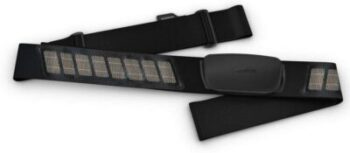
This heart rate monitor transmits heart data instantly. It uses Bluetooth 5.0 or ANT + technology for transmission to compatible devices. Its price remains affordable given the quality of manufacture and reputation of the brand.
See priceThis heart rate monitor is of the abdominal belt type. The manufacturer has used plastic and nylon textile materials for its design. It has an autonomy of 3 years and a half, which is very long! It can synchronize with a smartphone via compatible applications, but also with a watch or a GPS meter. In addition, it is compatible with gym equipment or bike computers, especially Garmin brand equipment. This belt is comfortable and practical. It adjusts and fits perfectly to the size of the user. For maintenance, you can detach it. In addition, the heart rate monitor is water and splash resistant.
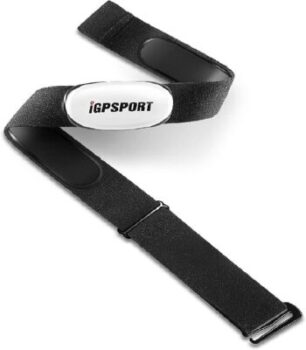
Using this heart rate monitor, you can easily track your heart rate in real time via your bike computer and GPS watches via ANT+, smartphone or tablet, with Bluetooth-enabled training applications.
See priceThis heart rate monitor is easily worn on the chest thanks to its flexible textile band, easy to put on and adjustable. It has a great autonomy, since at the rate of 1 hour of use per day, the battery can last 1 year! You can instantly track your heart rate via fitness apps like Endomondo, UA Run, Polar Beat, WahooFitness, MountainBike, ALA COACH, Zwift or even iGPSPORT for iOS and Android. Thanks to its ANT + and Bluetooth connectivity, it works with the Garmin Polar Wahoo iGPSport bike computer, smartphones, tablets, sports watches of the same brand.
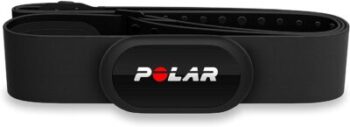
The Polar H10 provides greater measurement accuracy than the Garmin HRM Cardio-Dual thanks to its exceptional heart rate sensor. This waterproof model can be used for swimming and guarantees great comfort to its user.
See priceThe polar H10 is suitable for outdoor and indoor physical activities, including swimming. This is made possible by the waterproof design of the sensor. This model uses Bluetooth and ANT+ to communicate with other compatible devices and you can download the free Polar Beat app for your workouts with this heart rate monitor. You can also perform your physical activities just with the Polar H10. Indeed, it has a data storage unit to record the measurements made during the session. Once the session is over, you can transfer them to your mobile devices and view them on Polar Beat. The rechargeable battery offers a life of 400 hours.
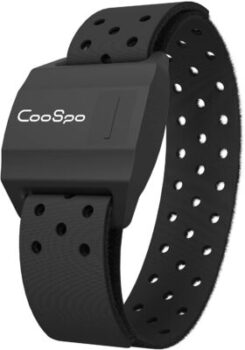
The CooSpo 706 uses an optical sensor that measures heart rate at the wrist. Unlike the 3 models previously presented, it offers a better wearing comfort, without neglecting the accuracy. Compatible with other mobile devices.
See priceThe CooSpo 706 attaches to the wrist, not the torso, providing a more comfortable fit. It uses an optical sensor to measure heart rate and transmits measurements via Bluetooth and ANT+. You can sync it with a smartphone, tablet, GPS watch or other connected sports equipment. This heart rate monitor bracelet works with most third-party applications, including Whoo, Nike Runclub, Elite hrv app, Runkeeper, MapMyFitness... Its battery life is 20 h. Note the composite material used for its design, offering great resistance, even with intensive use.
Any specific needs?
The best heart rate monitor in 2021
The best entry-level heart rate monitor
The best high-end heart rate monitor
Your guide :
Rate this buying guide :By rating this buying guide, you are helping us to reward our best writers. Thank you!
| TOP OF THE TOP | CHEAP | TOP OF THE LINE | EXCELLENT | |

In accordance with our commitment, this buying guide does not contain any sponsored products. |
 9/10 |
 8/10 |
 8/10 |
 8/10 |
| OUR SELECTION |
Garmin HRM Cardio-Dual
|
iGPSport HR40
|
Polar H10
|
CooSpo 706
|
|
This heart rate monitor transmits heart data instantly. It uses Bluetooth 5.0 or ANT + technology for transmission to compatible devices. Its price remains affordable given the quality of manufacture and reputation of the brand.
|
Using this heart rate monitor, you can easily track your heart rate in real time via your bike computer and GPS watches via ANT+, smartphone or tablet, with Bluetooth-enabled training applications.
|
The Polar H10 provides greater measurement accuracy than the Garmin HRM Cardio-Dual thanks to its exceptional heart rate sensor. This waterproof model can be used for swimming and guarantees great comfort to its user.
|
The CooSpo 706 uses an optical sensor that measures heart rate at the wrist. Unlike the 3 models previously presented, it offers a better wearing comfort, without neglecting the accuracy. Compatible with other mobile devices.
|
|
|
|
World-renowned brand for the reliability of its equipment
|
Great heart rate monitor for cheap
|
More accurate measurements than Garmin
|
Exceptional wearing comfort
|
|
|
Abdominal belt
|
Belly belt for more accuracy
|
Usable for all sports disciplines
|
Precise optical sensor on the wrist
|
|
|
3 and a half years of autonomy
|
1 year battery life
|
400 hrs battery life
|
20 hrs battery life
|
Help us improve this table:
Report an error, request the addition of a feature to the table, or suggest another product. Thank you for your kindness!
We spend thousands of hours each year studying the major specialized websites, analyzing products of hundreds of brands and reading user feedback to advise you on the best products.
We are a product review company with a single mission: to simplify your buying decisions. Our research and testing helps millions of people every year find the best products for their personal needs and budget.
To support us you can: use our links to make your purchases (which often earns us a small commission), share our articles on social networks, or recommend our site on your blog. Thanks in advance for your support!

The first thing you need to know is the type of sensor used by the heart rate monitor. There are two types of sensors on the market, the wrist sensor and the lap belt sensor. The latter is more accurate, but you are forced to place it at your rib cage. You should know that the wrist sensor is easier to put on, therefore more practical. However, it is less accurate. If you want more comfort and optimal measurement, you can choose to use both sensors at the same time.
The heart rate monitor is a device for personal use since it collects information specific to a person. However, there may be times when, due to frequency interference, the device transmits data to other mobile devices, smartphones or tablets in your location. To remedy this situation, it is highly recommended to choose a model equipped with a secure and encrypted data transmission. This feature provides you with the advantage of viewing your personal information and making a reliable transmission to other devices.
To better progress in your goals, it is necessary that your heart rate monitor can record the data collected during your activities. This data can consist of your maximum heart rate, average heart rate, the amount of calories burned during each session, etc. For the most sophisticated models, they can even record the heart rate at each moment or at a regular interval. This type of data could be of great use to you once consulted to be able to make an analysis of your performance.
To collect heart rate data optimally, the electrodes of the lap belt must be sufficiently moistened before they come into contact with the skin.
Depending on
the brand and model of heart rate monitor, you can benefit from a personalized training feature. This type of training is proposed by the device based on the analysis it performs on your performance. It will advise you on the ideal activity for your condition.
For classic models, the autonomy is generally sufficient. On the other hand, for heart rate monitor models with GPS technology, it is important to know its autonomy. The device constantly exchanges information with satellites to indicate the user's position. This action uses considerable energy and autonomy can quickly become a major problem. Opt for models with a long battery life if you plan to use the device for several hours, such as when hiking for example.
Most heart rate monitors are equipped with a device to measure the speed of the user during his session. Two technologies exist, GPS and accelerometer. If you usually run on less hilly terrain, opt for models equipped with accelerometer. On the other hand, for map-based routes, choose a GPS heart rate monitor, which is more suitable for navigation. There are also models that combine both technologies in the same device.
The heart rate monitor makes it easy to know in which effort zone you are (imagine measuring your pulse manually while running...).
A heart rate monitor is a device that measures the heart rate of a person. It allows you to know the number of beats per minute of the heart. On some models, this device consists of two elements, namely a waist belt and a receiver device that indicates the data collected.
The receiving device is placed on the user's wrist. There are also other means of measurement, such as an optical sensor on the wrist. The device emits an infrared signal and detects the heart rate without the use of a lap belt.
This device is very useful and is not just a gadget. The heart rate of a person is directly influenced by the intensity of the effort he develops. To put it simply, the more effort a person makes, the faster his or her heart rate increases.
The device is very practical to carry out a training, to follow a program of fitness, weight loss. It will allow you to manage your efforts efficiently and to know in real time your heart data, calories burned and more important data. If you have heart problems, don't hesitate to use it to have more performance and also safety.
Heart rate monitors can be grouped into 3 types, namely abdominal sensor heart rate monitors, optical sensor heart rate monitors and finally models that combine these two sensors at the same time.

These types of heart rate monitors are less present on the market. They are less comfortable because you have to put them on like a belt around your abdomen. Nevertheless, they are much more accurate compared to an optical wrist model.
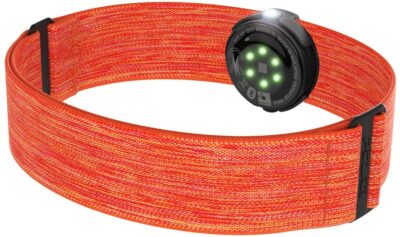
This
second type of heart rate monitor provides more convenience to its user because of the absence of a bulky lap belt. They use optical sensors and are worn on the wrist. The device uses the infrared signal to collect data about your heart activity. Stray noise does not interfere with its operation, but its accuracy is relatively less precise compared to a model with a lap belt sensor.
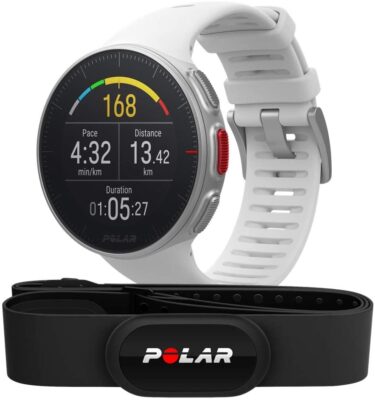
This
latter type of heart rate monitor embeds both existing data collection systems: the optical wrist sensor and the lap belt sensor. If you want more accuracy, this type of device is the ideal choice.
Check the water resistance of a model before using it underwater. Some types of heart rate monitors are splash-proof, but are not suitable for underwater use and may be damaged.
The GPS allows you to know with precision your geographical coordinates in real time. It also tells you the distance you have just travelled, your speed in real time, and the average speed. It can also communicate the altitude of the place where you are located. Its advantages are its functions related to navigation. Indeed, you can follow with precision a predefined route. It has a compass and you can return to your starting position without fear.
The fact that you know the altitude is also a strong point for users practicing the trail for example. It can be used for a variety of physical activities, such as hiking, biking, skiing and more. You can easily view your routes on a map by transferring the navigation data to a computer. However, the instantaneous speed indicated by the GPS is less accurate and less responsive. The heart rate monitor cannot be used indoors and its battery life is an important criterion to check if you use it for several hours.
The accelerometer is a sensor that is used to collect the instantaneous speed, with more accuracy compared to a GPS. This device will be attached to your shoes. It determines the acceleration of your feet several times per second, synthesizes the data and indicates your instantaneous speed and the distance you have covered. It is also able to give you your average speed from the moment you started the session, as well as the length of the stride and the number of strides you have taken in a minute.
But unlike a GPS model, it doesn't show your position because it doesn't have a navigation function. The accuracy of the device regarding speed decreases if it is used on rough terrain, with slopes or during trail sessions. For these strengths, the accelerometer can be used perfectly indoors and it admits a greater autonomy.
The choice can only be made according to the user's preferred activities. The GPS is suitable for trails, hilly terrain and for those who like to run on maps. The accelerometer is suitable for people who do indoor training or training on flatter terrain. For more versatility, we recommend models with both technologies simultaneously.
Read the instructions carefully
Before using the device, it is recommended that you read its instructions carefully to make the best use of it, but also to interpret the data it provides. By scrupulously following the manufacturer's instructions, you will obtain greater data accuracy, helping you to progress in your sessions.
Put on the cardio belt correctly and moisten the electrodes
For
greater efficiency, the electrodes must be well moistened. The belt should be placed under the pectoral muscles if the user is a man. For a woman, place it on the part below the bra. Adjust the belt so that it is secure, but not too tight. If the device doesn't pick up your heart rate well, try turning it to the left, so it's closer to your heart.
Use a waterproof heart rate monitor for swimming
For
amateur and professional swimmers who want to know their heart rates and other important data as they work out, there are waterproof models. As the name implies, they are waterproof. This type of device uses a device installed on the goggles. The heart rate is measured via the user's temporal artery.
Listen to your body
Although
the heart rate monitor is a sophisticated device, it will not be able to detect the possibility of muscle fatigue or also psychological fatigue. It is important to constantly keep in mind that you are doing sports or any physical activity primarily for fun. Don't just look at your heart rate. Listen to your body and how you feel. Take a break as soon as you feel your limits.
Use a model with an accelerometer for indoor activities
The
use of a heart rate monitor with an accelerometer function is ideal for indoor activities. The reason is that this type of device provides great accuracy in knowing distance traveled, instantaneous speed, and various useful data, in addition to your heart rates. The GPS model is unable to provide certain data when used indoors.
The best heart rate monitor depends on your needs and budget. Read our buying guide to find out which products are the best at the moment.
Heart rate monitors are highly accurate, but this varies depending on the type of device used. Belly belt heart rate monitors are more accurate than optical models that are attached to the wrist. For greater accuracy, it is therefore advisable to use a lap belt model.
Almost all heart rate monitors on the market have a data recording function. Depending on the model, you can have more or less storage space. However, if you use the device for long sessions, you should go for models with a larger data storage memory.
To find out if your device can transfer the data collected or not, simply check if it has Bluetooth or Wi-Fi wireless technologies. If it does, it makes sense that it has the ability to transfer data to other devices, such as a computer or mobile device.
As a general rule, the heart rate should be between 70 and 75 beats per minute. But depending on the situation and certain activities, this value may decrease or increase. You can take a heart rate measurement after waking up to find out the normal value. Then, from the data, you can know whether your rhythm is good or not. A heart rate above 80 beats/min may be considered a risk factor. However, the best way to find out if your heart rate is good or not is to ask your doctor.
Every month we help more than 1 000 000 people buy better and smarter.
Copyright © 2022 - Made with ♥ by buyingbetter.co.uk
Your reviews and buying guides 0% advertising, 100% independent!